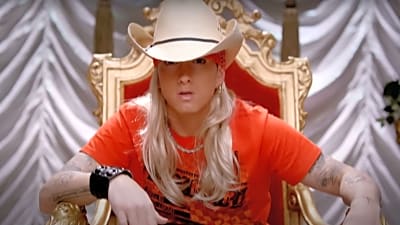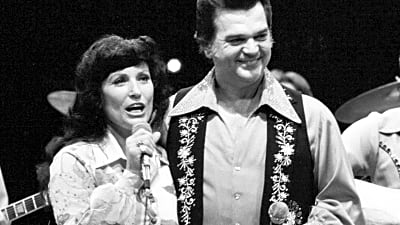- Home
- Quizzes
- My Quiz Activity
- Newsletters
- MY FAVORITES
- Add Sports/Teams
- SPORTS
-
NFL
- NFL Home
- Arizona Cardinals
- Atlanta Falcons
- Baltimore Ravens
- Buffalo Bills
- Carolina Panthers
- Chicago Bears
- Cincinnati Bengals
- Cleveland Browns
- Dallas Cowboys
- Denver Broncos
- Detroit Lions
- Green Bay Packers
- Houston Texans
- Indianapolis Colts
- Jacksonville Jaguars
- Kansas City Chiefs
- Las Vegas Raiders
- Los Angeles Chargers
- Los Angeles Rams
- Miami Dolphins
- Minnesota Vikings
- New England Patriots
- New Orleans Saints
- New York Jets
- New York Giants
- Philadelphia Eagles
- Pittsburgh Steelers
- San Francisco 49ers
- Seattle Seahawks
- Tampa Bay Buccaneers
- Tennessee Titans
- Washington Commanders
-
MLB
- MLB Home
- Athletics
- Arizona Diamondbacks
- Atlanta Braves
- Baltimore Orioles
- Boston Red Sox
- Chicago White Sox
- Chicago Cubs
- Cincinnati Reds
- Cleveland Guardians
- Colorado Rockies
- Detroit Tigers
- Houston Astros
- Kansas City Royals
- Los Angeles Angels
- Los Angeles Dodgers
- Miami Marlins
- Milwaukee Brewers
- Minnesota Twins
- New York Yankees
- New York Mets
- Philadelphia Phillies
- Pittsburgh Pirates
- San Diego Padres
- San Francisco Giants
- Seattle Mariners
- St. Louis Cardinals
- Tampa Bay Rays
- Texas Rangers
- Toronto Blue Jays
- Washington Nationals
-
NBA
- NBA Home
- Atlanta Hawks
- Boston Celtics
- Brooklyn Nets
- Charlotte Hornets
- Chicago Bulls
- Cleveland Cavaliers
- Dallas Mavericks
- Denver Nuggets
- Detroit Pistons
- Golden State Warriors
- Houston Rockets
- Indiana Pacers
- Los Angeles Clippers
- Los Angeles Lakers
- Memphis Grizzlies
- Miami Heat
- Milwaukee Bucks
- Minnesota Timberwolves
- New Orleans Pelicans
- New York Knicks
- Oklahoma City Thunder
- Orlando Magic
- Philadelphia 76ers
- Phoenix Suns
- Portland Trail Blazers
- Sacramento Kings
- San Antonio Spurs
- Toronto Raptors
- Utah Jazz
- Washington Wizards
-
NHL
- NHL Home
- Anaheim Ducks
- Boston Bruins
- Buffalo Sabres
- Calgary Flames
- Carolina Hurricanes
- Chicago Blackhawks
- Colorado Avalanche
- Columbus Blue Jackets
- Dallas Stars
- Detroit Red Wings
- Edmonton Oilers
- Florida Panthers
- Los Angeles Kings
- Minnesota Wild
- Montreal Canadiens
- Nashville Predators
- New Jersey Devils
- New York Islanders
- New York Rangers
- Ottawa Senators
- Philadelphia Flyers
- Pittsburgh Penguins
- San Jose Sharks
- Seattle Kraken
- St. Louis Blues
- Tampa Bay Lightning
- Toronto Maple Leafs
- Utah Mammoth
- Vancouver Canucks
- Vegas Golden Knights
- Washington Capitals
- Winnipeg Jets
- NCAAF
- NCAAM
- Olympics
- Boxing
- Entertainment
- Lifestyle
- Golf
- MMA
- Soccer
- Tennis
- Wrestling
- Sports Betting
- More Sports
- RESOURCES
- My Account
- YB on Facebook
- YB on Twitter
- YB on Flipboard
- Contact Us
- Privacy Policy
- Terms of Service
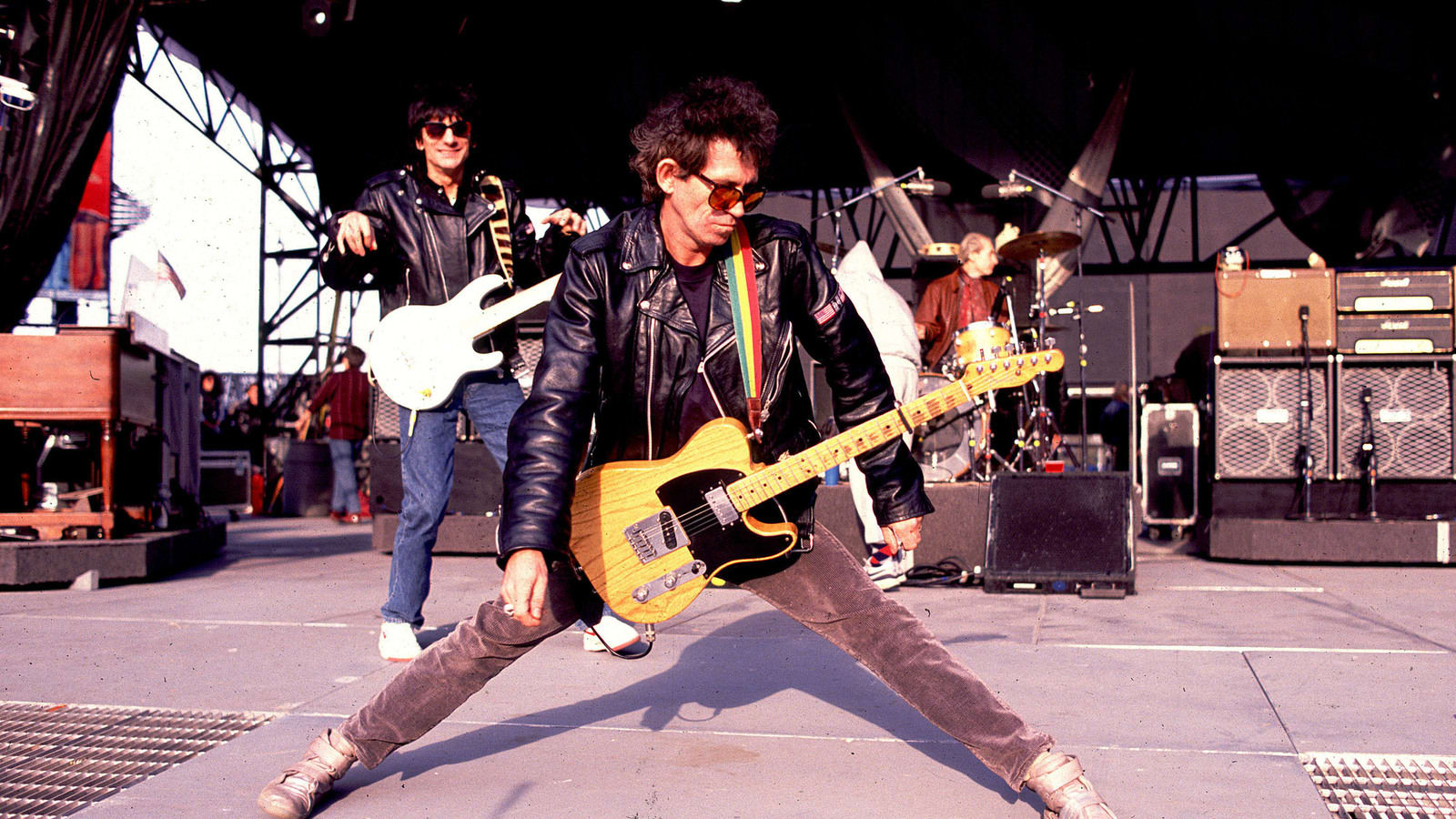
Guitar gods: The 30 most influential lead guitarists of all time
Keep in mind that this isn’t just a list of the best guitar players of all time but also of influential lead guitarists, meaning we favored rock and country musicians over solo blues or folk musicians who often played with little accompaniment. Here are our guitar gods (and goddesses!): the 30 most influential lead guitarists of all time.
Duane Allman

When it comes to Duane Allman’s prowess as a guitarist, we can talk about epics like “Whipping Post,” but one of the most mesmerizing things about Allman was his ability to improve on existing songs (and the fact that he accomplished everything by the age of 24, when he tragically died in a motorcycle crash). He did this with the Allman Brothers Band on Blind Willie McTell’s “Statesboro Blues” and Dickey Betts’ “In Memory of Elizabeth Reed” (see the 1971 live album “At Fillmore East” for both of these gems), and he did it as a session musician and collaborator, like when he dominated Boz Scagg’s rendition of Fenton Robinson’s “Loan Me a Dime.” In fact, upon hearing Wilson Pickett’s cover of “Hey Jude,” an astounded Eric Clapton said he’s never heard better rock guitar on an R&B album. Clapton later enlisted Allman to play with him on the iconic guitar track “Layla,” a fact music fans often forget. In the end, one of the most telling things about Allman is if you ask a dozen people what the essential Duane Allman guitar song is, you’ll likely get a dozen different answers. And all of them will be right.
Chet Atkins

How could we have a list of influential guitarists without “Mr. Guitar” himself, Chet Atkins? In addition to his own hit songs, the fingerpicking pioneer played on now-legendary tracks like Hank Williams’ “Your Cheatin’ Heart” and Elvis’ “Heartbreak Hotel.” Not only did Atkins influence fellow country, jazz and classical guitar players as a musician but also as a producer he created an entire country subgenre, dubbed the “Nashville sound,” that revived the popularity of country music by replacing the fiddles and steel guitars of honky tonk with smooth strings, tempos and backing vocals. In all, Atkins released dozens of albums, more than 100 singles and earned a spot in the Country, Rock & Roll and Musician Halls of Fame.
Jeff Beck

A veteran of the Yardbirds, the Jeff Beck Group, and Beck, Bogert & Appice, Jeff Beck is also known for handling (and thoroughly rocking) the guitar duties for the likes of Rod Stewart, Mick Jagger, Stevie Wonder, Jon Bon Jovi and ZZ Top, among many others. However, the two-time Hall of Famer (with the Yardbirds and solo) is generally considered to be a “guitarist’s guitarist,” as he’s a straightforward technical whiz who plays without a lot of flash or fanfare. He may not get a lot of attention from the fans (despite winning eight Grammys and appearing on the cover of Rolling Stone three times), but we cannot understate how often Beck is praised and how many times he has been selected to play alongside other accomplished musicians — including being handpicked by numerous other guitar gods in this very list. And at the age of 75, he’s still going strong.
Chuck Berry

“Johnny B. Goode” has been listed among the greatest songs of all time, and it wouldn’t exist without Chuck Berry. He wrote the song, so it only makes sense, but the infectiousness of the ditty doesn’t come from its lyrics...it’s the guitar. Sure, the opening riff was borrowed from a 1946 Louis Jordan song (or maybe it was Marty McFly?), but there’s no denying that the rest of it is pure Chuck: fast-paced, showy and solo-filled. It has since been covered by the likes of everyone from the Beatles to Jimi Hendrix to Judas Priest. On stage, Berry’s duck-walking and one-foot-hopping brought him almost as much fame as he received for adapting rhythm and blues music into early rock 'n' roll, and nearly every well-known guitar player borrowed something from Chuck, including the man who inspired this list. Maybe that’s why Rolling Stone named “Johnny B. Goode” the absolute greatest guitar song of all time.
Ritchie Blackmore

Ritchie Blackmore was rated the 50th-greatest guitar player of all time by Rolling Stone. So how did he crack our top 25? Because he basically invented shredding. Listen to Blackmore on a song like Deep Purple’s “Highway Star.” Nobody else was playing like that at the time. Ritchie rocked sophisticated arpeggios and harmonic scales, used fourths in his riffs and incorporated elements of jazz, blues and classical music in his playing, whether it was with Deep Purple, Rainbow or Blackmore’s Night. His is the father of neoclassical metal and shred guitar, but Blackmore has said his goal was much simpler that: “I just wanted to make as much noise and play as fast and as loud as possible.”
Eric Clapton

Eric Clapton isn’t just any Rock & Roll Hall of Famer: He’s a three-time inductee, once as a solo artist and once each as the lead guitarist for the Yardbirds and Cream. And this is to say nothing about Derek and the Dominoes, Blind Faith, short stints with Delaney & Bonnie and Friends and the Plastic Ono Band, and any of his numerous collaborations. The man they call “Slowhand” also owns 18 Grammys and the rank of No. 2 on Rolling Stone’s list of the 100 Greatest Guitarists, and he is credited as the inspiration for scores of guitar players who followed him. As the old saying simply puts it: “Clapton is God.”
Lita Ford

The leather-wearing, guitar-slinging Joan Jett usually gets a lot of attention when it comes to female rockers, but she was never a lead guitarist, opting instead to handle rhythm duties with both the Runaways and the Blackhearts. In the former, the lead was handled by Lita Ford, who also deserves plenty of credit for busting down barriers and proving rock 'n' roll (and hard rock) isn’t just a boys club. Ford took her talents solo after the Runaways split in 1979 and put together a successful metal career that also saw her collaborating with the likes of Ozzy Osbourne, Nikki Sixx, Dave Navarro and Gene Simmons. Still shredding today, Ford released an album as recently as 2012.
David Gilmour

Pink Floyd had plenty of talent even in its early days, but the band didn’t find its signature sound until David Gilmour joined in 1967 just prior to the departure of Syd Barrett. After all, it was Gilmour’s instrument that was behind albums like “Dark Side of the Moon,” “Wish You Were Here,” “Animals” and “The Wall,” in which he could be heard providing guitar parts that were dreamy and melodic, bluesy and note-bending, or jarring, loud and imposing. His guitar and pioneering use of effects are the tools that illustrate beautiful images in the minds of audiences during each Pink Floyd masterpiece, and his solos are among the most recognizable to ever be created. All that being said, it’s no surprise Gilmour was enshrined in the Rock & Roll Hall of Fame more than two decades ago.
Buddy Guy

To call Buddy Guy a blues musician is misleading, as he actually transcends genres and couldn’t possibly be pigeonholed. As an up-and-comer, Chess Records tried to subdue his “noisy” and flamboyant style of guitar play (his tendency to play with his teeth and over his head would later be replicated by Jimi Hendrix), and relegated him to session duty for the likes of legends Muddy Waters, Howlin’ Wolf and Sonny Boy Williamson, among others. Instead, Guy preferred (and still prefers, at age 82) to bust out blues mixed with rock, soul and jazz, and his merciless bends, fast-paced licks and excessive distortion were the seeds that sprouted into the blues rock sound that eventually emerged in the late ‘60s. In fact, when Guy rightfully earned a place in the Rock & Roll Hall of Fame, his inductor was none other than Eric Clapton.
Kirk Hammett

Dave Mustaine might be the most influential thrash metal guitarist, but since he was primarily a rhythm guy, we’re going to hand the lead guitar title belt to Dave’s fellow “Big Four” ax-man, Kirk Hammett of Metallica. Fans might have soured a bit on Kirk (and Metallica in general) sometime in the early ‘90s, but Hammett did more to influence future trash metal guitarists with the band’s first five albums than anyone else has done in their entire careers. He showed that metal guitarists can play with a heavy, angry, driving sound while also staying true to the genre’s blues roots with his melodies and emotional solos.
George Harrison

Beatles members John Lennon and Paul McCartney usually got most of the attention from fans thanks to their former heartthrob status, but George Harrison deserves plenty of credit for crafting the band’s unique sound while playing lead guitar. The so-called “quiet Beatle” was also an innovator who often played with the structure of songs (including playing backward on “I’m Only Sleeping”) and incorporated elements of blues, rockabilly, R&B and even country into his style, much of which was on display when he later handled lead guitar duties with the Traveling Wilburys. The two-time Hall of Famer also showcased the diversity lead guitarists can offer when he occasionally picked up a ukulele or sitar, another influential move by one of rock 'n' roll’s most iconic musicians.
Jimi Hendrix

Some uninformed skeptics think there’s no way Jimi Hendrix could’ve possibly carved out a place on the Mount Rushmore of guitarists at such a young age, but this is the guy who stunned Eric Clapton when the two first met in 1966. This is the guy who opened a concert with “Sgt. Pepper’s Lonely Hearts Club Band” just three days after it was released in 1967 and created one of the most iconic images in rock 'n' roll history when he set his instrument on fire at the Monterey Pop Festival later that year. And he’s the guy who headlined Woodstock in 1969. Hendrix is also credited for evolving the electric guitar as a sound source, and he did it all before dying at the age of just 27. Hendrix’s first three albums were backed by the Jimi Hendrix Experience (Noel Redding and Mitch Mitchell), and the Band of Gypsys (Billy Cox and Buddy Miles) supported him on the last record before his death.
Tony Iommi

Most people agree that when it comes to metal, Black Sabbath was the first true band in the genre — and its signature sound wouldn’t have been possible without Mr. Tony Iommi. Not only was he the primary songwriter and composer, but Iommi’s riffs have since become the stuff of legends (see “Iron Man,” “War Pigs,” “Paranoid,” etc.), with almost every current metal guitarist crediting him as both an influence and a pioneer. The jury might still be out on which band actually “invented” metal, but it’s a unanimous verdict that Iommi is the founding father of metal riffs. Interestingly, Iommi’s signature sound was created somewhat out of necessity; an industrial accident left a teenage Tony without the tips of two of his fingers on his right hand, forcing the lefty to loosen his strings, tune down his instrument and use prosthetic fingertips, all of which contributed to a heavier sound.
B.B. King

It didn’t matter who B.B. King played with because when he was on stage, he was the star. As easily one of the most gifted guitarists to ever exist (and the best in the blues genre), King could bring the house down all by himself, but he preferred to play with a backing band, and he also had no problem jamming alongside Eric Clapton, Bo Diddley, Robert Cray and U2’s the Edge, to name just a few. After all, having floored audiences since the 1940s, King knew he was the inspiration behind almost every blues-influenced guitarist out there. He also knew that once he reached one of his signature solos — complete with near-impossible string bends and soul-shaking vibratos — he would suddenly have the attention of every eye and ear in the room.
Brian May

Brian May is an incredibly skilled musician — there’s simply no denying that — but what makes the Queen guitarist so influential is his unique approach to playing and recording his instrument, which happens to be a home-built guitar he named the “Red Special.” May would often play (and probably still does) with a sixpence coin instead of a pick, as the added strength would give him more control while playing as well as a variation in sound depending on the angle at which it contacts the string. May would also record his guitar harmonies numerous times and layer them on top of each other (see his solo in “Killer Queen” as an example), creating a rich wall of sound that’s difficult to otherwise replicate. And even if aspiring guitarists perfectly follow his formula, they’re still no Brian May.
Joni Mitchell

We may be stretching the definition of “lead guitarist” a bit here, but how could we not include Joni Mitchell in this list? The woman has done more for female guitarists (and songwriters!) than probably anyone else in the biz, dating all the way back to the early ‘60s. Eschewing the notion that rock stars have to be men, Mitchell also rebelled against traditional guitar playing, opting for some 50 open-style tunings that she dubbed “Joni’s weird chords” while picking and slapping her way to her now-signature sound. Mitchell’s songs have been covered countless times. She owns nine Grammys, earned a 1997 Rock & Roll Hall of Fame induction and has been named as an influence by everyone from Prince to Taylor Swift to Maynard James Keenan of Tool.
Jimmy Page

If you’re a guitar player born after 1969 and don’t consider Jimmy Page an influence, then it’s probably because you’ve never heard of him. If so, welcome to the real world! We’re sorry your closed society was never introduced to Led Zeppelin. Jimmy Page is, without a doubt, one of the greatest guitarists of all time, and he engineered some of the genre’s best and most recognizable riffs. Page was also an innovator, as his bluesy yet heavy sound paved the way for metal music. He also famously used a cello bow on his guitar during live performances of “Dazed and Confused” and “How Many More Times.” (And that’s to say nothing about his genius-level prowess as a producer.) Page earned two Hall of Fame trips: one for Zepp and one for the Yardbirds, the band that launched a thousand guitarists.
Bonnie Raitt

Many people can sing along with a Bonnie Raitt song or two, which is good, because playing along would be next to impossible. Raitt honed her craft at an early age after listening to blues music and learning to play bottleneck slide guitar, and she began to gain notoriety in the ‘70s and ‘80s while collaborating with some of the biggest names in music at the time. However, the blues, rock, country and folk musician didn’t fully break into the mainstream until the release and subsequent success of her 1989 record, “Nick of Time,” which was actually her 10th studio album. Between “Nick of Time,” 1991’s “Luck of the Draw” and 1994’s “Longing in Their Hearts,” Raitt earned nine of her 11 Grammys wins, and she was inducted into the Rock & Roll Hall of Fame just a few years later, in 2000. Raitt plays a customized Fender Strat and was actually the first woman to ever be given a signature line by the company.
Randy Rhoads

Randall William Rhoads graced this Earth for only a mere 25 years, but that was enough for him to make a profound mark that the metal world will never forget. After all, not only did he co-found Quiet Riot as a teenager, but also when people think of Ozzy Osbourne’s best post-Sabbath songs — tunes like “Crazy Train” and “Mr. Crowley” — the first thing that likely comes to mind is actually Rhoads’ driving riffs and mind-bending solos. Rhoads wasn’t even close to reaching his full potential when he died in a tragic Florida plane crash in 1982, but he was nevertheless a crucial early pioneer of neoclassical metal and the metal genre as a whole. "When I was practicing eight hours a day, his was the poster I had on my wall,” Rage Against the Machine guitarist Tom Morello has said of Rhoads, after whom Morello even named his first son.
Keith Richards

Well, of course, we have to include Keith Richards — he’s the whole reason for this list! He has played both lead and rhythm guitar (sometimes even in the same song) for the Rolling Stones since their inception back in 1962. Eschewing speed or showiness in favor of chords and rhythms, Richards is also one of the few guitarists in this list who regularly records with an acoustic guitar, referring to it as the basis for his playing, according to interviews. He has been called “rock's greatest single body of riffs” by Rolling Stone (the magazine, not the band), and this is to say nothing about his expert songwriting and occasional lead vocal contributions. The soon-to-be 75-year-old is easily one of the best guitar players alive, and the fact that the former addict is still living and playing today is an accomplishment in itself.
Carlos Santana
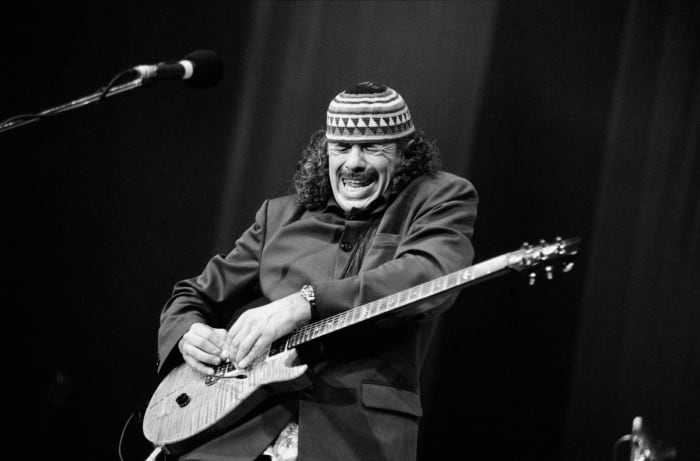
No one has had more of an impact on modern Latin guitar than Mexican-born Carlos Santana. Carlos’ namesake band, Santana, formed in San Francisco during the city’s musical explosion of the mid-to-late ‘60s, and it managed to seamlessly combine jazz, blues, salsa, African beats and rock influences into one genre. Only a few months later, the group would find a slot at Woodstock, where it floored audiences with performances of “Evil Ways” and “Soul Sacrifice” and jumped on the fast track to superstardom. Nearly 50 years have passed since then, during which Santana can take credit for winning 10 Grammys and three Latin Grammys, for managing to pull off a second wave of popularity in the ‘90s and for encouraging countless aspiring guitarists to first pick up their instruments. (You can even count Prince among his students!)
Slash

If you’ve made it into the mainstream with a one-name moniker, it’s a pretty good sign you’re a legend. This is, of course, true in the case of Slash. Most people know him as the mastermind behind some of the greatest solos and riffs ever recorded (“November Rain” and “Sweet Child o’ Mine,” respectively) while he played with Guns N’ Roses. But on the side, Slash also jammed (both onstage and on recordings) with Michael Jackson, Lenny Kravitz, Alice Cooper, the Yardbirds, Band of Gypsys and even ODB and Rihanna. And that’s to say nothing of his former supergroups, Slash’s Snakepit and Velvet Revolver. Keep your eyes peeled, because you never know where Slash and his trademark curly hair, top hat and sunglasses will appear next, including his ongoing performances with the surprisingly reunited Guns N’ Roses!
Sister Rosetta Tharpe

Rock 'n' roll arguably had numerous godfathers, but it only had one godmother: Sister Rosetta Tharpe. Raised in a family of gospel singers, Tharpe was deemed a musical prodigy in 1919 at the age of only four because of her singing and guitar-playing abilities. Although she remained loyal to the gospel genre, Tharpe had a penchant for jazz and blues that couldn’t be contained and spilled over into other emerging genres and eventually propelled her to star status. In fact, among those who cite Tharpe as a pioneer and influencer are Little Richard, Johnny Cash, Chuck Berry, Carl Perkins and Elvis Presley, not to mention British blues men like Keith Richards, Jeff Beck and Eric Clapton. All of these accomplishments, as well as a 2017 Rock & Roll Hall of Fame induction, are in addition to the barriers she broke down as both a woman and an African-American.
Pete Townshend

Pete Townshend could be on this list simply for inspiring countless aspiring young guitarists to play in his signature windmill style of strumming as well as for his tendency to smash and otherwise destroy musical equipment along with his bandmates in The Who. Of course, Townshend’s influence goes beyond these visuals. The aforementioned Jimmy Page credits Townshend for turning feedback into musical texture, and it’s basically common knowledge that few ax men played with as much fluid intensity as Townshend, who is also praised for popularizing the power chord.
Eddie Van Halen
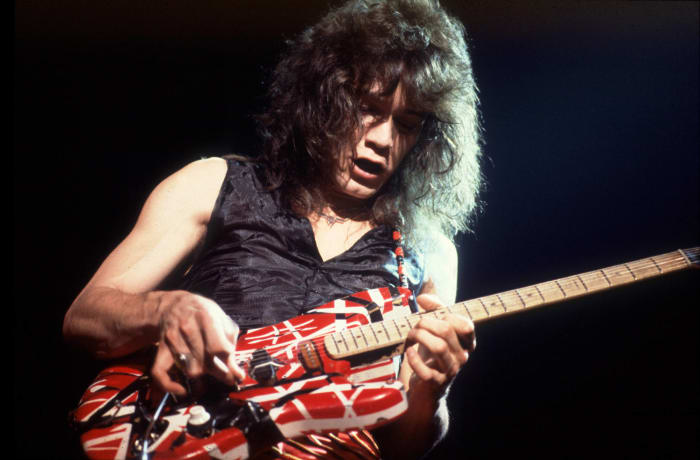
As evidence of Eddie Van Halen’s greatness, just listen to “Eruption.” What? I need more words? OK, fine. Although he listed Hendrix and Page as inspirations, Van Halen’s unique combination of two-hand tapping, speed picking, legato, excessive whammy usage and other techniques created a style that would in turn be emulated for decades to come. Van Halen found himself atop lists of best guitar players at a young age, and his legend has only continued to grow since he, his brother Alex, Michael Anthony and David Lee Roth released the hard-rock band Van Halen’s first album in 1978. Not only do countless guitarists actively choose to play like Eddie, some literally have to, as the innovator owns three patents for a tuning system, a headstock design and a guitar supporting device.
Stevie Ray Vaughan

By 1980, the days of blues music seemed all but gone in favor of new wave, synth pop, hard rock and hair metal...until a young guitar phenom named Stevie Ray Vaughan spearheaded the genre’s revival. The Texas-born prodigy exploded onto the scene as a 28-year-old at the 1982 Montreux Jazz Festival, where he floored audiences with both renditions of classic blues tracks and original creations (including “Pride and Joy”) as the lead guitarist for Double Trouble. Only two years later, Vaughan and his band headlined at Carnegie Hall. Although Vaughan struggled with substance abuse problems (namely alcohol and cocaine), it was a helicopter crash that ultimately cut his life short at the age of just 35 on Aug. 27, 1990. Vaughan was in the public eye for less than a decade, but he will forever remain on the lips of anyone discussing the greatest guitar players of all time.
Jack White

Who says the world has stopped producing great guitarists? The White Stripes rebooted garage rock and brought it back to the mainstream with their self-titled debut in 1999, featuring the musical genius known as Jack White on guitar and vocals. The duo (guitar and drums, no bass) quickly raced up the charts and dropped six highly acclaimed albums in just eight years before officially disbanding in 2011. The ever-eccentric White is simultaneously praised for both his minimalist style when it comes to equipment and his willingness to experiment with whammy and fuzz pedals, which results in effects like low-octave tones and a slide sound without actually using a slide. White’s prowess and genre-crossing capabilities are so substantial that he couldn’t be limited to just one band, as he also played with the Raconteurs and the Dead Weather during downtime with the White Stripes. He has now released three successful solo albums — each of which thoroughly pushed the boundaries of what we think is musically possible. White’s place among the hierarchy of all-time guitarists is very much debatable, but there should be no argument that he’s the top dog (or god) of this generation.
Nancy Wilson

Although both Wilson sisters could sing and play, it’s generally Ann who is known for singing and Nancy who is known for her guitar. Of course, with the wide range of songs released by Heart, it’s a bit more complicated than this. Although the “female Led Zeppelin” was female-fronted, Roger Fisher actually handled a lot of the electric guitar leads on Heart songs, with Nancy often taking the acoustic parts, sometimes even in a dueling fashion, like on the 1976 hit “Crazy on You.” Nancy has been praised for her style — which melds together classical, flamenco and hard-rock styles — as well as her superb songwriting abilities. In 2013, after much too long of a wait, Nancy, Ann and their Heart bandmates were finally inducted in the Rock & Roll Hall of Fame.
Angus Young

As a blues-influenced hard-rocker, Angus Young inspired many fans of heavy music to pick up their first guitar and experiment with techniques like pull-off arpeggios (see “Dirty Deeds Done Dirt Cheap”) and power chords (see “T.N.T.”), but his often simplistic style showcased in AC/DC also drew plenty of criticism from musicians who needlessly believe complexity is better. Young also deserves credit for influencing aspiring ax men with his stage presence, which includes signature antics like running, jumping and climbing on the shoulders of his lead singer. He’s also known for duck-walking, spinning and convulsing on the floor all without missing a note. In fact, Young’s stage presence is so iconic that most music fans need only see a schoolboy uniform or pair of shorts to remind them of one of the most epic guitarists to ever step on a stage.
Neil Young

With four guitarists in Crosby, Still, Nash & Young, it’s tricky to name one as the lead. However, naming the best guitarist is a much easier feat: It’s undoubtedly Neil Young. During the CSNY days, Young couldn’t keep his genius confined to one band. He released “Everybody Knows This is Nowhere” (featuring the epic guitar songs “Down By the River” and “Cowgirl in the Sand”) with Crazy Horse the same year he joined forces with CSN, he dropped 1970’s “After the Gold Rush” a year later and the incredibly successful “Harvest” (featuring “Old Man” and “Heart of Gold”) just two years after that. And that was just the beginning of Young’s extremely long, constantly busy and still-thriving career!
Matt Sulem has been writing and editing professionally for more than a decade. He has worked for BubbleBlabber, The Sportster, and The Daily Meal, among other publications, but has called Yardbarker home since 2006. Matt’s writing combines a love for nostalgia with a passion for promulgating interesting, informative, and lesser-known facts about pop culture
More must-reads:
- 20 super celebrity duos who’ve been best friends for years
- The 20 funniest country music songs ever recorded
- 25 celebrity names that are nearly impossible to correctly pronounce
- 20 celebrities who became legitimately famous from TikTok
- 20 iconic musicians who have most unique singing voices
Breaking News
Trending in Entertainment
Customize Your Newsletter
 +
+
Get the latest news and rumors, customized to your favorite sports and teams. Emailed daily. Always free!
PRIVACY POLICY EDITORIAL POLICY CONTACT US
ABOUT YARDBARKER TERMS OF SERVICE
Use of this website (including any and all parts and
components) constitutes your acceptance of these
Terms of Service and Privacy Policy.
This site is for entertainment purposes only.
There is no gambling offered on this site.
Gambling Problem? Call 1-800-Gambler.
